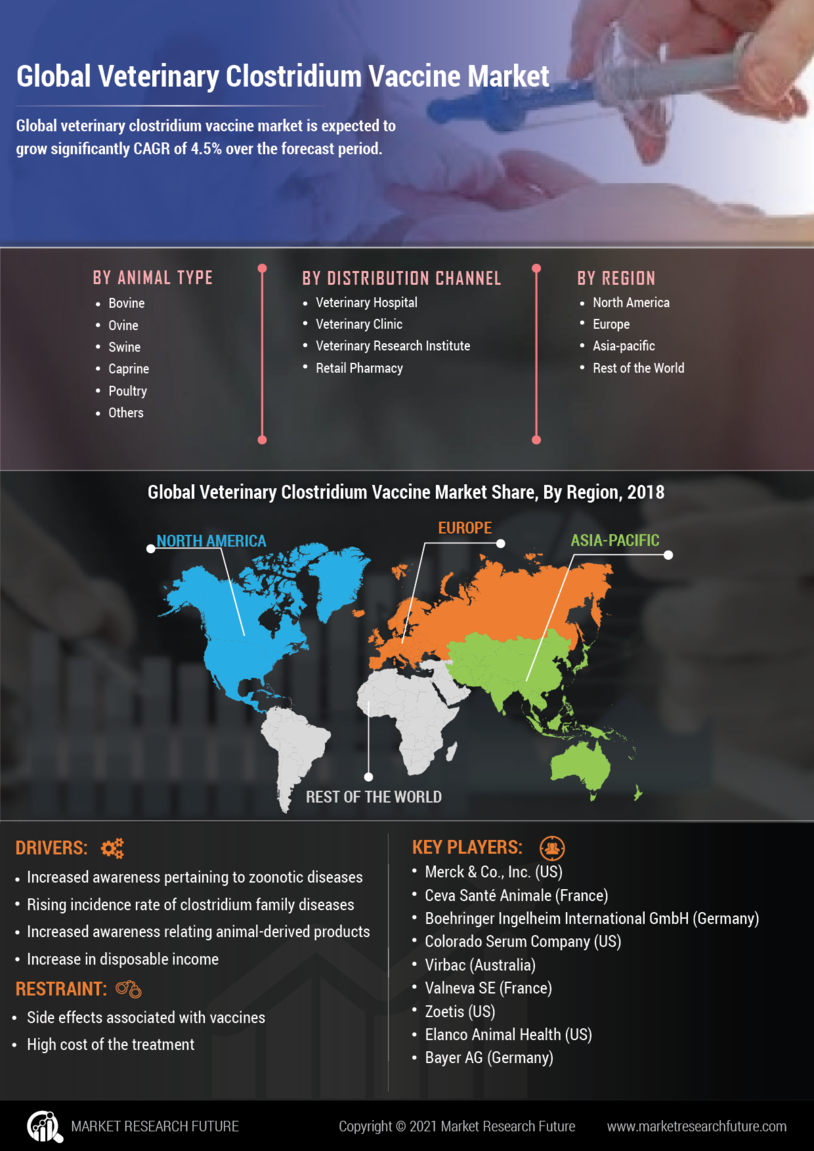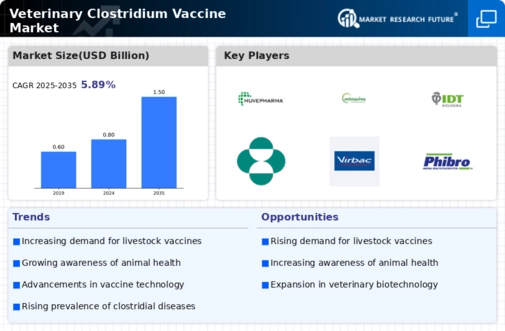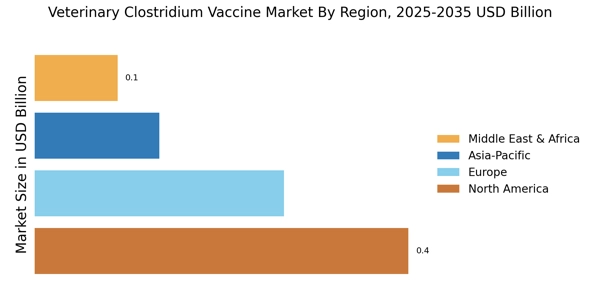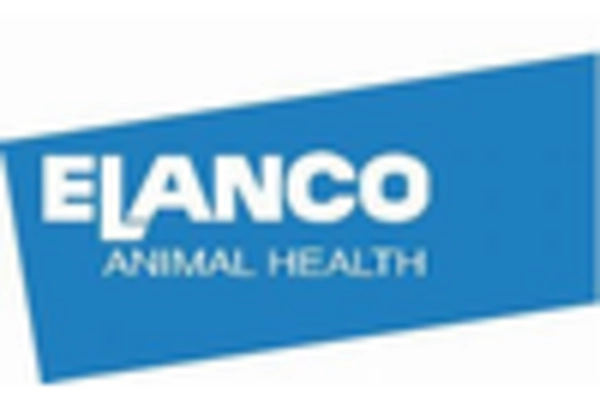Advancements in Vaccine Technology
Technological innovations in vaccine development are driving the Veterinary Clostridium Vaccine Market forward. Recent advancements, such as the use of recombinant DNA technology and adjuvants, have enhanced the efficacy and safety profiles of vaccines. These innovations allow for the production of vaccines that provide longer-lasting immunity and require fewer doses, which is particularly appealing to veterinarians and animal owners. As a result, the market is witnessing an influx of new products that cater to diverse animal populations. The Veterinary Clostridium Vaccine Market is likely to benefit from these advancements, as they not only improve vaccination outcomes but also foster greater acceptance among stakeholders.
Growing Demand for Animal Products
The Veterinary Clostridium Vaccine Market is influenced by the rising demand for animal products, such as meat, dairy, and eggs. As the global population continues to grow, the need for sustainable food sources becomes increasingly critical. Healthy livestock is essential for meeting this demand, and vaccination plays a vital role in preventing diseases that can affect productivity. Consequently, farmers and producers are investing in vaccination programs to ensure the health of their animals. This trend is expected to drive the Veterinary Clostridium Vaccine Market, as stakeholders seek to enhance animal health and maximize production efficiency.
Rising Incidence of Clostridial Infections
The Veterinary Clostridium Vaccine Market is experiencing growth due to the increasing incidence of clostridial infections among livestock and companion animals. Clostridial diseases, such as tetanus and botulism, pose significant health risks, leading to economic losses in the agricultural sector. Reports indicate that the prevalence of these infections has been on the rise, prompting veterinarians and pet owners to seek preventive measures. Consequently, the demand for effective vaccines is surging, as they are essential in controlling outbreaks and ensuring animal welfare. The Veterinary Clostridium Vaccine Market is thus positioned to expand as awareness of these infections grows, and the need for vaccination becomes more pronounced.
Increased Focus on Animal Health and Welfare
The Veterinary Clostridium Vaccine Market is bolstered by a growing emphasis on animal health and welfare. Pet owners and livestock producers are becoming increasingly aware of the importance of preventive healthcare measures, including vaccination. This shift in mindset is leading to higher vaccination rates, as stakeholders recognize that healthy animals contribute to better productivity and profitability. Furthermore, educational campaigns and outreach programs are enhancing awareness about the risks associated with clostridial infections, thereby driving demand for vaccines. The Veterinary Clostridium Vaccine Market is thus poised for growth as the focus on animal health continues to intensify.
Regulatory Support for Vaccination Initiatives
Regulatory bodies are playing a crucial role in shaping the Veterinary Clostridium Vaccine Market by endorsing vaccination initiatives. Governments are increasingly recognizing the importance of vaccination in controlling infectious diseases among animals. This has led to the establishment of guidelines and policies that promote the use of vaccines, including those targeting clostridial infections. Financial incentives and subsidies for vaccination programs are also being introduced, further encouraging adoption. As regulatory support strengthens, the Veterinary Clostridium Vaccine Market is likely to see a rise in vaccine uptake, contributing to improved animal health outcomes.


















Leave a Comment